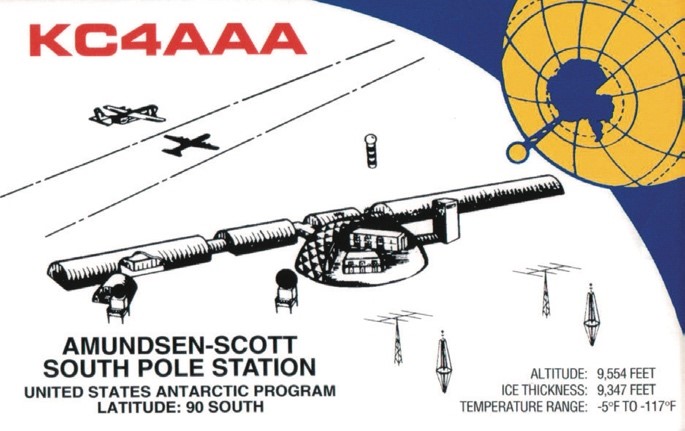Editor’s Note: Every month, DX Engineering features QSL cards from our team members’ personal collections. Usually we showcase ones from entities that are currently active or will soon be QRV. However, with so many DXers homebound these days and the number of DXpeditions reaching all-time lows, we’ve altered the rules. Until things change, you can expect a bit of everything from our stockpiles of QSL cards, including the rarest of the rare, personal favorites, and recent QSLs of historical significance.
Looking to relocate? If you have a penchant for meteorological research, thrive in low humidity, and can withstand temperatures decidedly on the cool side (say, from -5 degrees to -117 degrees F), you may want to consider talking to your real estate agent about available spots in the Amundsen-Scott South Pole Station. You’ll also have to be an elite scientist, so don’t start packing your bags just yet.
All kidding aside, the station has operated continuously as a research facility since November 1956. Today, it houses 50 heavily-layered scientists and support personnel in the winter (mid-February to late October) and 150 people during the summer. With upgrades completed in 2008, the station includes an atmospheric research observatory, an observatory for astrophysics, and teams of scientists studying glaciology, geophysics and seismology, ocean and climate systems, astronomy, biology, and other disciplines.
Named after Roald Amundsen and Robert F. Scott, who attained the South Pole in 1911 and 1912, the facility also features a Ham Radio station, KC4AAA. Tom, KB8UUZ, DX Engineering technical writer, made contact with KC4AAA in 1997. The card shows the station before current upgrades.
“It was just a great thrill to contact the South Pole back then only using 100 watts and a wire antenna,” he said.

Other stations operating from Antarctica include KC4USV (McMurdo Station, the logistics hub of the U.S. Antarctic Program) and KC4AAC (Palmer Station, which focuses on the study of birds, seals, and other components of the marine ecosystem).
Want to upgrade your DXing capabilities? The Elmers at DX Engineering are here to lend an ear. Reach out to them at Elmer@DXEngineering.com. Find everything you need at DXEngineering.com to up your game, including transceivers, antennas, amplifiers, coaxial cable assemblies, headsets, and more.

